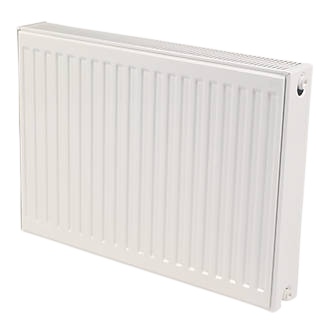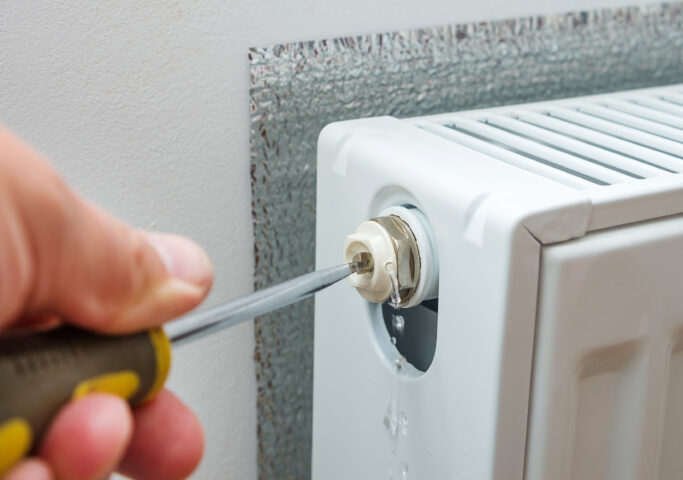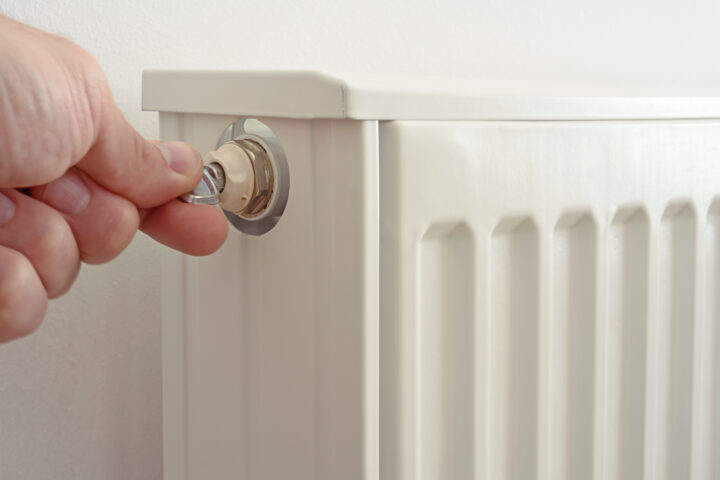Bleeding radiators regularly is quite essential for the health of your radiator and your central heating system, as it will allow them to last longer and get them working efficiently for your hot water needs. Your radiator can sometimes have issues that won’t let it be as effective as usual and it may make your boiler work even harder.
Here we will go through why you should bleed your radiator, when to do it and how to bleed a radiator.
When should you bleed a radiator?

You might find that your radiator seems a bit off and isn’t working as well as it usually does. For example, there may be cold patches on your radiator instead of heat coming off all parts of it. When you get these cold spots, this is usually a sign to bleed your radiator as it often means that you have air trapped inside of the radiator that needs to be let out.
This trapped air will likely mean you won’t get as much heat coming from your radiators and your boiler has to work harder to heat your household. This also probably means that will be paying your energy bills in full without actually getting full efficiency from it, which is costing you money in the long run.
Another sign of trapped air inside a radiator is if you hear anything strange, such as gurgling noises or if your radiator is making loud noises. It is likely that these are caused by air trapped inside the radiator that you need to bleed.
Steps on how to bleed a radiator
So once you’ve decided that your radiator is not working like it usually does and that something should be done, you need to bleed it to let out all the air to get it back to normal. Here we’ll have a step-by-step guide to show you the best way to get your heating system back to its best.
Step 1: Turn the heating fully on

Before you begin bleeding a radiator, you will need to turn your heating on and wait until it gets to the maximum temperature. You can use the time it takes to heat up to prepare your area and set up everything that you might need to bleed a radiator.
For example, get some towels and lay them down in the areas where you think you will bleed the radiator, whilst also making sure you have got the correct tool for it such as a radiator bleed key or a screwdriver. Radiator keys can be found at most hardware stores or are easily attainable online as well.
Step 2: Feel for cold patches
Once the radiator is as hot as it can be, feel around for cold spots, carefully to make sure that you don’t burn yourself. If you find a cold spot or two on your radiator, this means your radiators need bleeding.
Step 3: Turn off your heating system and wait for your radiator to cool
Before you can do anything else, you should turn off your central heating system and wait for the temperatures to cool down again. This is so that you don’t get burnt when you are bleeding your radiators as the hot water can harm you as it is let out.

Step 4: Locate your radiator bleed valve
When you’re ready to bleed your radiator and have got everything in place, you’ll need to locate the radiator valve that you turn to let out the trapped air. This valve is usually located at the top of the radiator on one of the sides, so make sure your towel is placed below the side that it is on catch any water that leaks out.
Step 5: Insert your key and bleed the radiator
You should now get your radiator key or screwdriver and insert it into the radiator bleed valve. Once in, slowly turn the key anti-clockwise to open the valve to let the air out where you will probably hear a hissing sound, which will let you know that there is air escaping.

When you can no longer hear air escaping, there might be some dirty water that leaks from the valve as well, which is the reason for the towels on the floor. Releasing this build-up of dirty water will allow hot water to flow more freely around all your heating system.
After the hissing noise has stopped, turn your key clockwise to reseal the bleed valve, making sure not to tighten it too much otherwise, this may cause damage to the radiator valve.
Step 6: Check the pressure gauge
With all the trapped air now out of the radiator, you will need to check your boiler pressure to make sure it isn’t too low or too high. To do this, go to your boiler and check the pressure gauge, which should be between 1-1.5 bars.

If it isn’t, you will need to rebalance it, usually by using a boiler filling loop. Connect one end of the loop to the mains water supply and the other to your boiler, allowing water to flow through it whilst you reset your boiler pressure. When it is within the recommended range, disconnect the filling loop from your mains and boiler, as everything should now be in order.
Step 7: Turn on your central heating and check for cold spots
Now that your bleed valve has been tightened and your boiler pressure is at a good level, you can turn your central heating system back on. Following this, you are then able to check if there are still cold spots on your radiator or if it is now back to working effectively.
If you still feel cold parts on the bottom of your radiator, it may be a sign that you have a build-up of radiator sludge, which will mean you might have to manually remove the radiator and pour the contents out so that water can flow properly again.
Bleeding radiators FAQs
Why is it important to bleed a radiator?
Bleeding radiators will only ever help them to become more energy efficient, both for actually giving off heat and for your energy bills. Over time, your radiator will get a build-up of sludge and trapped air, so letting all of these out will improve the performance of your radiator.

It also means that you will get the efficiency that you pay for, rather than paying the full price of your bills for worse heating.
How often should you bleed them?
Bleeding your radiators once a year is a good habit to get into, as waiting too long between each bleed could create a lot of build-up. This could then make the job of bleeding even harder once you finally get around to doing it.
Doing it often will mean that you can constantly be on top of any issues with your radiator’s and boiler’s efficiency, giving you peace of mind knowing that it is working as it should.
Why should I turn the heating off when I bleed a radiator?
When you start bleeding a radiator, it is important that you turn your heating off beforehand. This is because water can leak or spray out when you turn the bleed valve, so if this is boiling hot, it could harm you if it gets on your skin. Turn your heating system off to ensure that any water that does come out will be of cold to moderate temperature and unable to hurt you.
Bleed your radiators regularly
We’ve now gone through why you need to bleed radiators and how to do it, so hopefully, you can learn from this and begin regularly bleeding radiators, to get them to their maximum effectiveness.

If you find your heating is inefficient even after following all of these steps, you may be in need of a new boiler to get back to maximum energy efficiency. Getting a replacement boiler can cut costs long-term over the many years that you will have it, which could make it the right thing to do rather than waiting as long as possible for your boiler to give out.